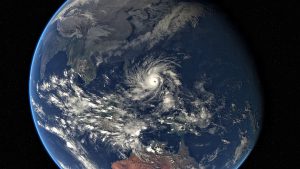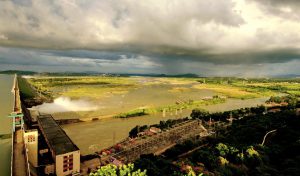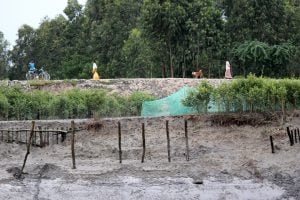It is difficult task to do an adequate review of “The Himalayan Arc”. Simply listing the names of the 28 pieces of prose, plus the 7 pieces of poetry would fill up all the space of an article. Even listing the backgrounds of the various authors, from foreign correspondents to prominent authors, to strategic analysts and diplomats is a task better suiting to lists than reviews. All of this actually goes to prove how interesting the area is, which Namita Gokhale, the editor of the work, describes as “the bend of the Himalayas, the East of South-east, including Nepal, Bhutan, north-east India, and Myanmar”. It also shows the varied types of people who are increasingly interested in the region which was – until fairly recently – marked by bad roads, insurgencies, government restrictions and, in general, an isolation from the wider world.
This has changed, and dramatically. It is not that infrastructure has improved vastly – though it has improved significantly – or that insurgencies have disappeared, or that the governments have become more amenable. There has been an improvement in all of these things to a certain degree – although in some cases, such as Myanmar and the northeast, the improvements have been interspersed also by instances of shocking violence, and in Nepal the situation remains fluid. What has changed dramatically, though, is the economies of India and China, the two giants in the region. With the striking rise in their economic power, there has been an increasing interest in the area where their influence rubs against each other.
In his piece, “Tibet, India and China”, the strategic analyst Manoj Joshi makes a very interesting observation, writing that, “Without the Chinese annexation of Tibet and the 1962 war, the Himalayan region may have arguably remained remote, with poor connectivity.” In a sense on of the major drivers of infrastructural development and the development of the region overall is the recognition by both India and China at how badly their troubled frontier regions, both within their borders and outside of them, are; as well as their fears that these problems will leave them at a strategic disadvantage with the other country. Joshi’s piece is essential reading because it places the history of the Tibetan region – one of the great empires of its time – and its dismemberment front and centre of the discussion of what is happening, just as Amish Raj Mulmi’s short history of the making of the Gorkha empire re-inserts the history of Nepal. These histories have largely been forgotten in favour of the lines drawn on the map by the British Empire and its successors, but they have re-emerged, and have to be understood, if we are to understand the complex political geography of the region.
But it would be simplistic, and condescending, to suggest that it is only India and China that are driving the change. The rising prosperity of places like Bhutan – once considered a hidden kingdom – has allowed the people and politicians of these regions to increasingly find themselves on the world stage. Writing by well-recognised authors of fiction such as Indra Bahadur Rai, Prajwal Parajuly, Janice Pariat, Chetan Raj Shrestha, and Mamang Dai, recognises that. In his piece, “looking to the future, spanning 1,000 years”, the veteran journalist and analyst, Sanjoy Hazarika, writes “Guwahati, the capital of Assam, is closer to Hanoi than it is to Delhi.” His piece focuses on the movement of people in the region and their interconnectedness, a feature that can be both a boon as well as the excuse for xenophobic violence. He adds that, “A formula has to be found where it is possible to work across the borders while maintaining the sanctity of frontiers… only a regionalism spurred by the vision of a new economic architecture for Asia can bring peace and progress to the far eastern Himalaya.”
This is a tough ask, and a call to a type of thinking that is rare in the region. The recent crisis caused by the National Register of Citizens in the Indian state of Assam, which may de-recognise anywhere up to 400,000 people as citizens does not augur well. And, of course, there is the massive issue of the Rohingya, of whom approximately a million have been displaced by Myanmar. Two pieces near the end, by Salil Tripathi and Ma Thida, focus on the deep challenges that arise out of Myanmar, a country ruled for years by a brutal military junta, and which has, recently, under the leadership of the Nobel Laureate Aung San Suu Kyi, earned itself much opprobrium not only with its treatment of the Rohingya, but its crackdown and imprisonment of Myanmarese journalists and activists. Ma Thida’s essay, “A ‘fierce’ fear” makes for tough reading as it shows how challenging it is for an activist to work in the country, but also how these challenges might be overcome.
Whatever comes of the region – and the book ends with an essay by the diplomat David Malone on a note of hope – it will undoubtedly become more and more important. This is only the first of many books to come that will grapple with the complexity of the region as a whole.
“The Himalayan Arc”, edited by Namita Gokhale, HarperCollins India, INR 699, 333 pages









